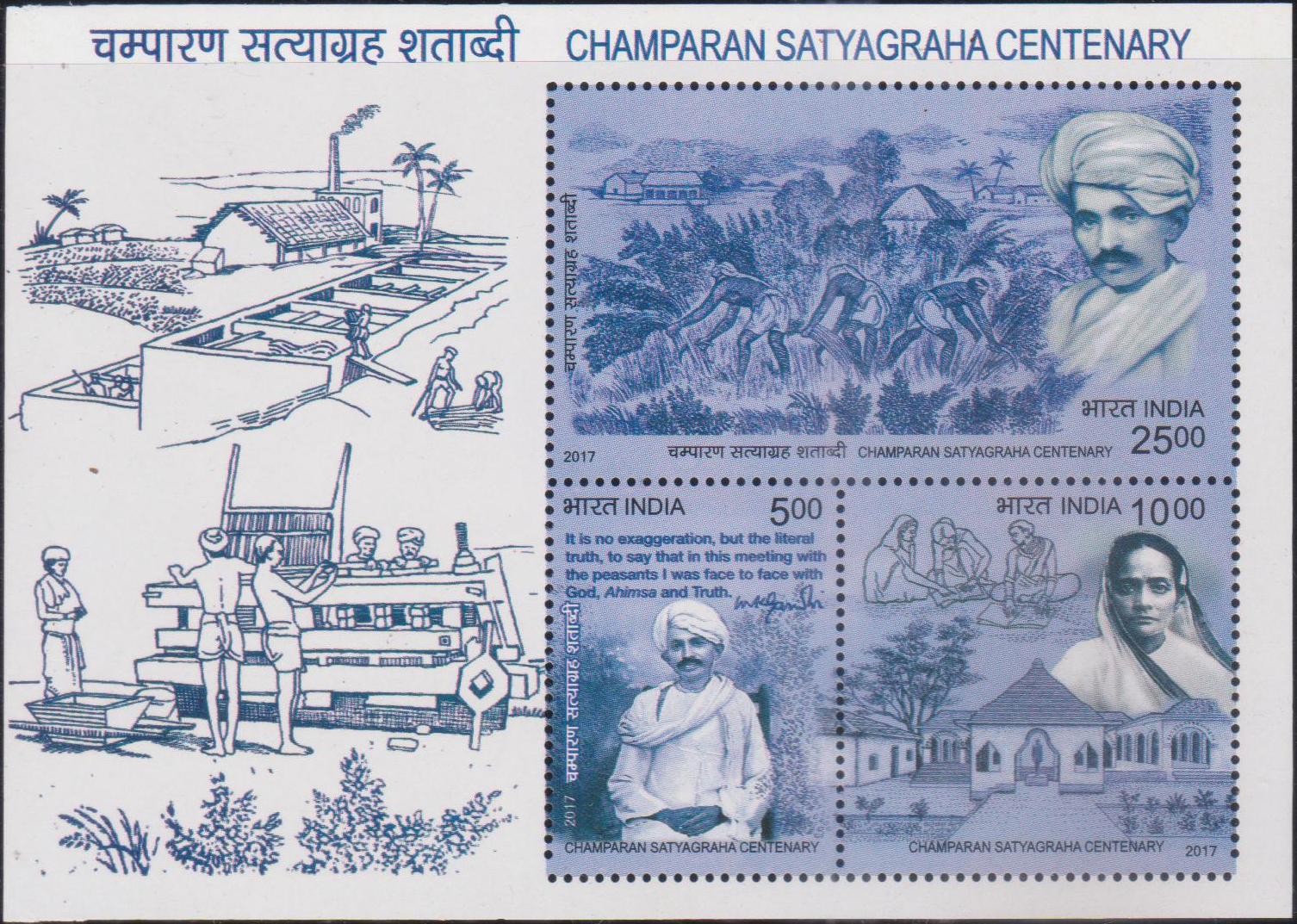
Champaran Satyagraha
A Miniature Sheet consisting of 3 nos. of commemorative postage stamp on the Centenary of Champaran Satyagraha, first Satyagraha movement during Indian Independence inspired by Mahatma Gandhi :
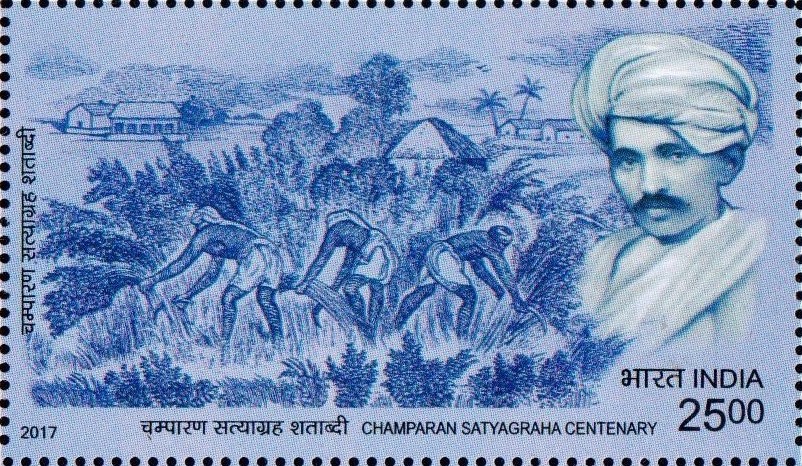
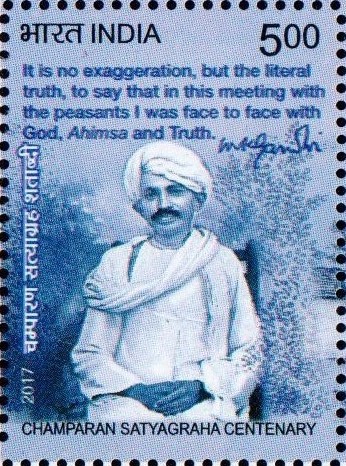
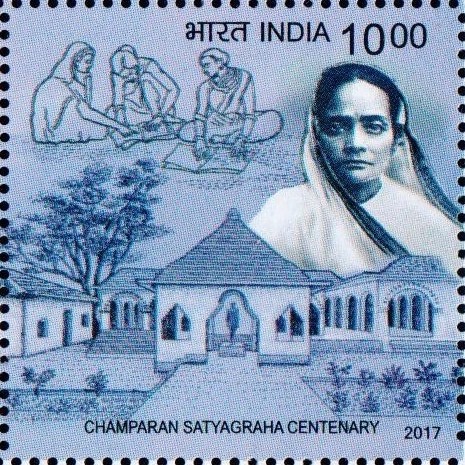
 Issued by India
Issued by India
Issued on May 13, 2017
Issued for : Department of Posts is pleased to issue a set of Commemorative Postage Stamps on the occasion of Centenary of Champaran Satyagraha.
Credits :
Stamps/Miniature Sheet/FDC/Brochure : Shri Sankha Samantha
Cancellation Cachet : Smt. Alka Sharma
Type : Miniature Sheet, Mint Condition
Colour : Multi Colour
Denomination : 500, 1000 & 2500 Paise
Stamps Printed : 5.0 Lakh each
Miniature Sheet Printed : 1.0 Lakh
Printing Process : Wet Offset
Printer : Security Printing Press, Hyderabad
About :
- On the afternoon of April 15, 1917, thousands had gathered at Motihari railway station in Bihar’s East Champaran, waiting for a man who was destined to lift their lives out of misery. It was 3 pm when Gandhiji alighted at the station from a train coming from Muzaffarpur. One of the places Gandhiji went to was the Bhitiharwa Ashram in Champaran, North Bihar, where in 1917; he came to conduct the famous “Indigo Labour Enquiry” and then launched a Satyagraha against forced cultivation of indigo by poor farmers.
- It was at Champaran that the transformation from Mohandas into the Mahatma began. This is the story of Gandhi’s first satyagraha. The movement that began a new chapter in India’s Independence struggle.
- After his return from South Africa in 1915, Gandhiji established the Sabarmati Ashram in Gujarat. Then, on his mentor Gopal Krishna Gokhale’s advice, he embarked on a journey to discover India. He travelled all over the country, from Calcutta (Now Kolkata) and Shantiniketan in Bengal to Kanpur, Rangoon (Now Yangon) and Rishikesh. During the 31st session of the Congress in Lucknow in 1916, Gandhiji met Raj Kumar Shukla, a representative of farmers from Champaran, who requested him to go and see for himself the miseries of the indigo ryots (tenant farmers) there.
- The farmers were poorly compensated for their indigo crops and if they refused to plant indigo, they had to face heavy taxation. The landlords (mostly British) would enforce this system through their agents, called gumasta, who executed the terms brutally.
- As a result, the reduced production of much-needed food crops and exclusive indigo farming (they were not allowed to grow any other crop even during the indigo off-season) had led to untold sufferings for the ryot farmers, including a famine-like situation. So, when the news of Gandhi’s arrival reached Champaran, it spread in the region like wildfire and he was greeted by large crowds of peasants at railway stations all along the way from Muzaffarpur to Motihari.
- A day after reaching Motihari, Gandhiji left for the village of Jasaulipatti – he had heard about a tenant there who had been beaten and whose property had been destroyed by the landlords.
- He was on his way to the village when he was served a notice from the British district magistrate, WB Heycock, with orders to leave Champaran by the next available train. Gandhi refused to comply and the police arrested him. He was produced before a court on April 18 where the magistrate proposed a deal,
“If you leave the district now and promise not to return, the case against you will be withdrawn”
Gandhi replied “I came here to render humanitarian services to the people of this region. I shall make Champaran my home and not leave till I have helped these suffering people.” - With the kind of support Gandhiji was already receiving from the people of Champaran, the British government, fearing unrest, released him. Two days later the case was withdrawn and Gandhiji was allowed to remain in the district. The government also instructed its officers to look into the indigo farmers’ sufferings.
- During his stay in Champaran, Gandhiji took up residence at Hazarimal Dharmashala in Bettiah village. He then visited many villages in the region to study the grievances of the peasants. He recorded the statements and testimonies of 8,000 indigo cultivators to understand their issues and the causes underlying them.
- Soon realizing that ignorance and illiteracy among the farmers had made it easy for the Britishers to exploit and repress them, Gandhiji decided to setup voluntary organizations to improve the economic and educational conditions of the people.
- He laid the foundations for three schools in 1917 – the first near Motihari, the second in Bhitiharwa and the third in Madhuban. To bridge the gap between education and work, he also set up several self-sustaining ‘Buniyadi’ schools where training in spinning, carpentry, farming and weaving were imparted as a part of school education.
- Realizing Gandhi’s strength and devotion to the cause, the government made Gandhiji a member of an enquiry committee constituted to look into the excesses committed by landlords and planters. In October, the committee submitted its report to the government and on November 29, the Champaran Agrarian bill was submitted in the Bihar Legislative Council.
- On March 4, 1919, with the formal signature of the Governor General, this bill turned into a law. Almost a year after Gandhi’s arrival, the exploitative tinkathia system had finally been abolished.
- There have been peasant movements before and after the Champaran movement of 1917, but what makes Gandhi’s Champaran satyagraha significant is the fact that it was the first time that bridges had been built between the peasants and the other sections, especially the middle class intelligentsia. In this sense, the symbolic significance of this satyagraha was much greater than what actually happened in Champaran.
- Text : Based on the information available on internet.


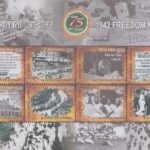
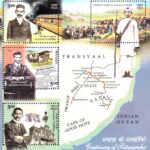

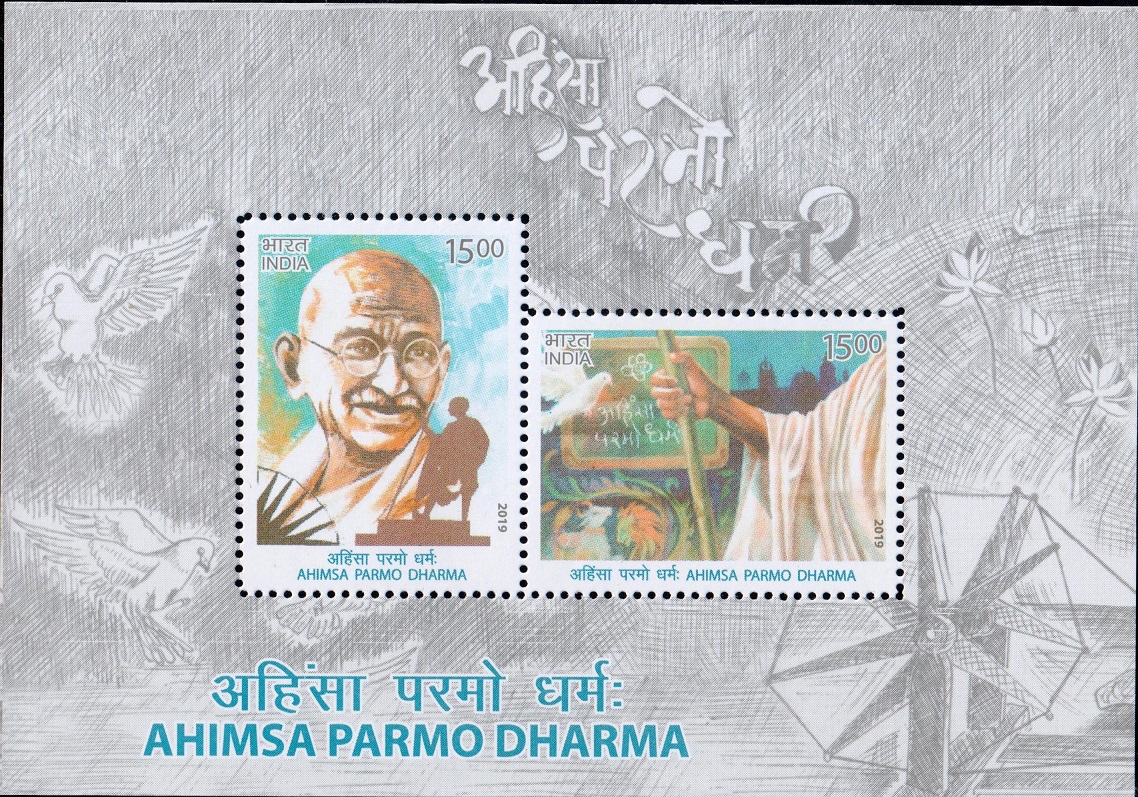
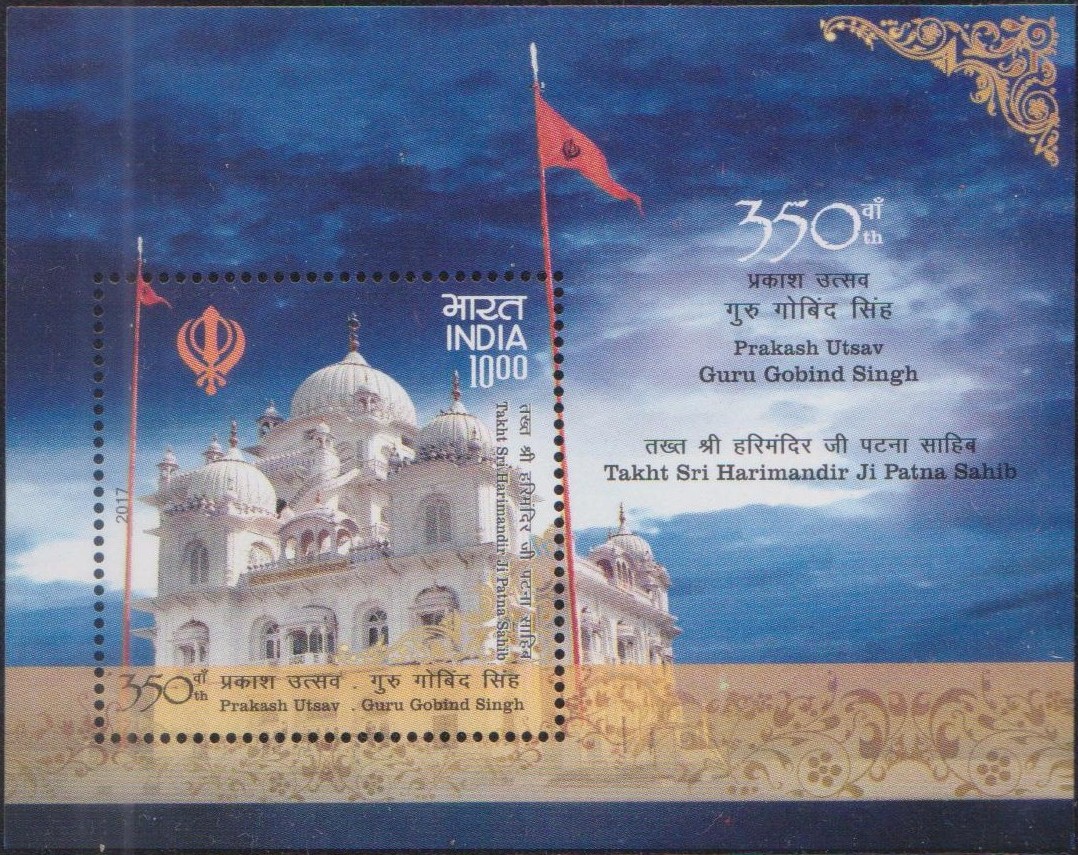
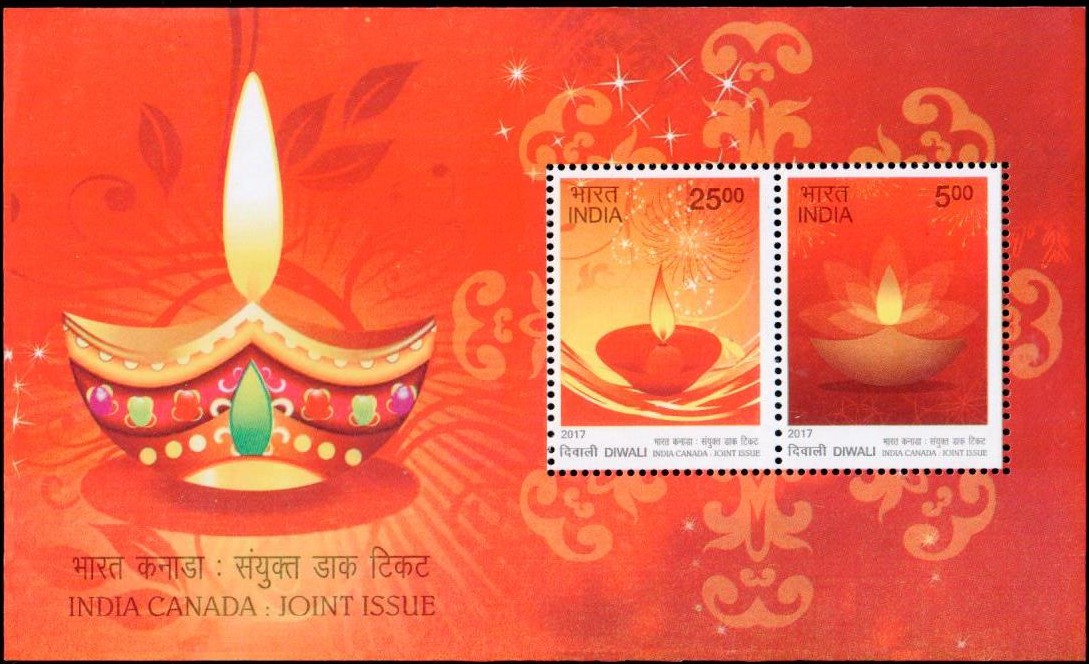
[…] as Ganga Bridge. It stands at the place where Mahatma Gandhi crossed the river long back to go to Champaran, where he laid foundations of struggle that was to dislodge British, and hence the […]
[…] soon joined the Indian National Congress. Gandhi’s first major achievement came in 1917 with the Champaran agitation in Bihar. The peasantry was forced to grow Indigo, a cash crop whose demand had been declining over […]
[…] India’s struggle for Independence, the “Champaran Satyagraha” marks a turning point. Rajkumar Shukla drew the attention of Mahatma Gandhi, who had just […]
[…] as the method of protest for seeking the truth and fought for the cause of the peasants of Champaran, who were exploited by their landlords. Dandi March which was a rebellion against taxes imposed on […]
[…] the Home Rule Movement in Bihar and was its President in 1916. He also took active part in the Champaran Satyagraha in 1917. The most fruitful phase of his political career began with the Non-Cooperation and […]
[…] Union and started a student organisation whose members actively participated in Gandhiji‘s Champaran movement. It was in Calcutta as a student that Rajendra Prasad was exposed to a new awareness that had […]
[…] in different places till 1927. In 1917 he first came into contact with Gandhiji during the Champaran Satyagraha which turned him into a fully dedicated nationalist. From 1927 onwards he was engrossed in Ashram […]